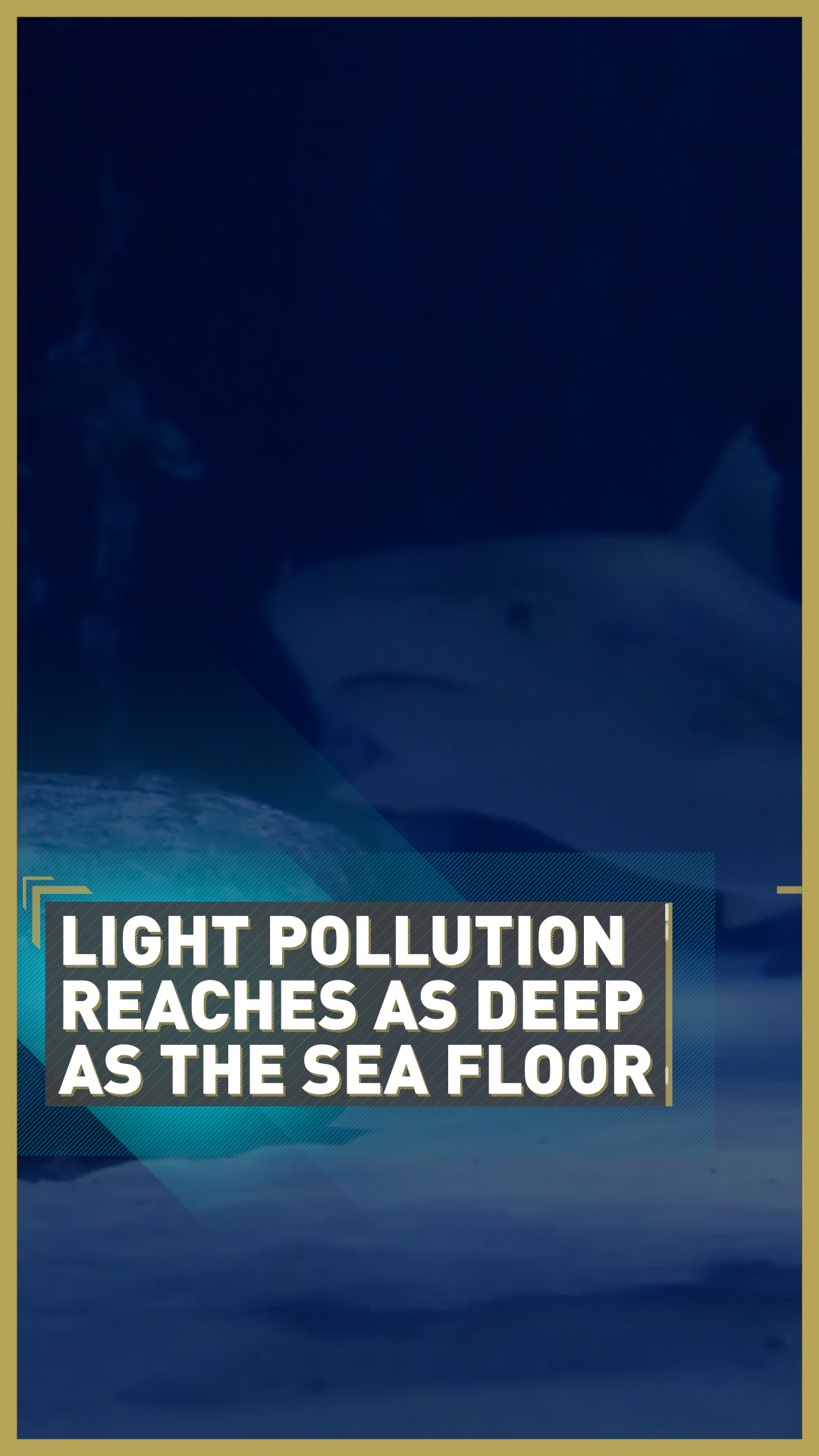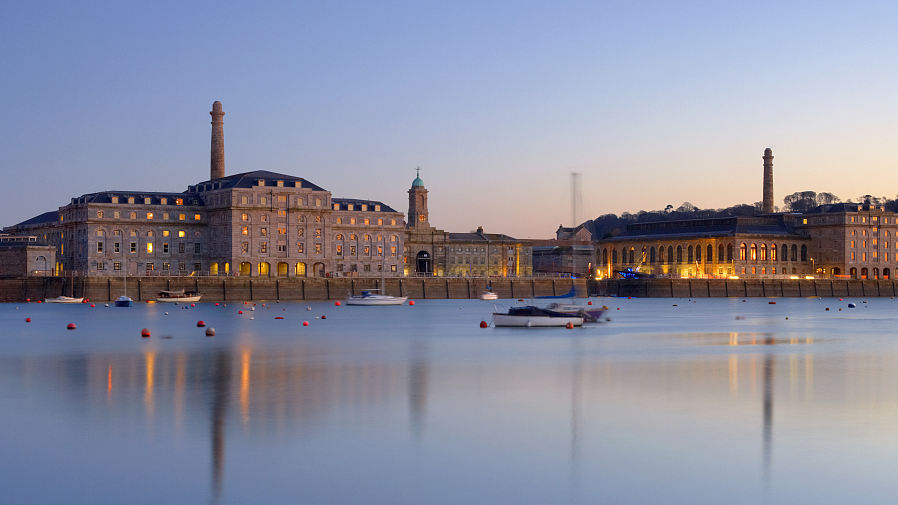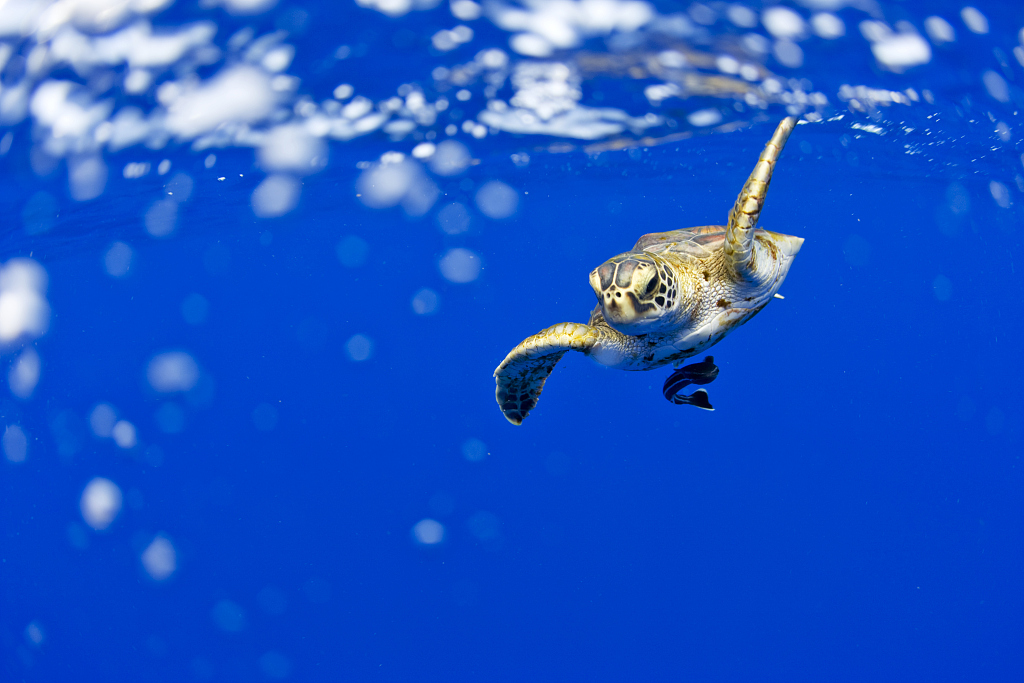What Ocean Animals Are Affected By Light Pollution
01:04

Besides almost obliterating the stars from our night skies – more than a third of humanity is no longer able to see the Milky way nowadays – light pollution has go a problem that goes as deep equally the bottom of the body of water.
A report led by the University of Plymouth in the UK has constitute that the artificial light from littoral cities is affecting as many as three quarters of habitats on their neighboring sea floors.
The devastating effects of light pollution on animals and ecosystems have been widely observed worldwide, especially near busy mega-cities, but this is the showtime study of its kind to look at what excessive artificial lighting is doing to creatures at the bottom of the sea, and to present actual measurements of its touch on.

The port of Plymouth in southwest England, where research was conducted on the touch of bogus light on marine life. /VCG
The port of Plymouth in southwest England, where research was conducted on the impact of bogus light on marine life. /VCG
The researchers from the University of Plymouth spent four nights in 2018 studying the waters of Plymouth Sound and the Tamar estuary, looking for calorie-free infiltration – in the class of red, green and blue wavelengths – on the surface of the water, beneath the surface, and on the ocean floor.
What they found is that while the bear on of the blood-red wavelengths was minimal, 76 percent and 70 per centum respectively of dark-green and blue lights reached the seafloor – these aforementioned colors being present in the LEDs that are used along the coast to calorie-free up city streets.
This type of light pollution cause what's called an 'artificial skyglow,' disrupting the natural biological cycles of the marine life living on bounding main floors which relies on the light of the moon to regulate itself for behaviors such equally reproduction, sleep, food and protection from predators.

Baby ocean turtles employ moonlight reflecting on waves to reach the sea after hatching – unless bogus lights confuse them. /Paul Souders/Getty/VCG
Baby bounding main turtles employ moonlight reflecting on waves to reach the sea afterward hatching – unless artificial lights confuse them. /Paul Souders/Getty/VCG
The researchers are besides investigating how individual species living on sea floors are afflicted by light pollution, while plans for global measurements involving an international team of scientists called Global Bogus Light Ocean Network (GLOW) have been postponed because of the COVID-19 pandemic.
The group behind the newspaper is hoping their research volition trigger new policies looking into mitigating the negative touch of artificial lighting on the environment, and perhaps reducing excessive lighting.
"Lxx-v per cent of the world's mega-cities are now located in coastal regions and littoral populations are projected to more than double by 2060," said Thomas Davies, the University of Plymouth marine conservation lecturer who led the study.
"So unless we have action now, information technology is clear that biologically important low-cal pollution on the sea floor is probable to be globally widespread, and increasing in intensity and extent, and putting marine habitats at risk."
Video editor: Natalia Luz
Source: https://newseu.cgtn.com/news/2020-08-18/Study-shows-light-pollution-reaches-the-sea-floor-harming-marine-life-T2jqRRELW8/index.html
Posted by: winklerwhadminvabot.blogspot.com

0 Response to "What Ocean Animals Are Affected By Light Pollution"
Post a Comment